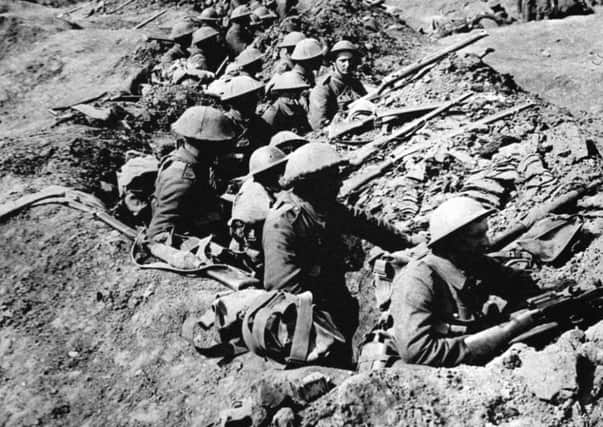Stories of murder and mutiny retold by York historian


AMONG the poignant and harrowing stories in These Were Earth’s Best: Voices of the First World War, those detailing the field punishments are particularly shocking.
Many old soldiers from across Yorkshire recalled an especially brutal practice, Field Punishment Number 1, which involved tying a soldier to a gun wheel in the crucifix position.
Advertisement
Hide AdAdvertisement
Hide AdArtillery veteran Arthur Abel, of Easingwold, recalled one tragic story of a ‘batman’ - a personal servant - who insulted his officer after being on duty for 24 hours without sleep.
“He was tied to a gun wheel, spread eagled, and suspended, and it was the bitterest, coldest day you can imagine. He spent hours tied by his wrists and feet on this wheel.
“He had two days of this, and at the end of the second day got pneumonia and died. There was merry hell about it, and a lot of people threatened this officer would probably run into a bullet. He never did.”
Soldiers told Dr Peacock that ill-treatment by some sergeants and officers sometimes became unbearable.
Advertisement
Hide AdAdvertisement
Hide AdAlfred Bairstow, of Thornton, Bradford recalled: “You won’t believe this - we put a bullet through one of our officers at the Bullecourt sector. He were really bad to us. And we shot the sergeant. He were that hard on us. It were done by lots of the lads. If you didn’t do it they’d do it to you.”
And York man John Graham, who served with the Royal Army Service Corps, recalled one soldier killing an officer with a hand grenade.
“One of the bombardiers knew what he was doing. He took a pin out of a Mills bomb and chucked it down this shallow dugout where the telephone lines came in and it blew the roof off and it came down on this officer. They hated his guts. They had to dig him out, he was bleeding terribly.
“He died three days after in an advanced field dressing station. He went down as killed in action. And there was no inquest, we were too near to Jerry for there to be a court martial.”
Advertisement
Hide AdAdvertisement
Hide AdMurdering officers at their posts was one option and mutiny was another.
Relations between infantry and officers led to mutinies at the Etaples base in France in 1917.
Stephen Palmer, of Cambridge, recalled life in camp at Etaples, saying: “This trouble (mutinies) broke out on account of these damned instructors. They were pigs. A lot of fellows decided they were going to do a bunk, so they went over the bridge into Etaples (town) and the man in charge of our lot said ‘Any of them you see, shoot him, he’s a deserter.”
Those who defied authority or deserted risked being executed. Over 3,000 British and commonwealth soldiers were sentenced to the firing squad, although only 306 were actually executed.
Advertisement
Hide AdAdvertisement
Hide AdSomme veteran Leonard Cavinder, of Hull, recalled an execution in 1917 of a private from his home city who had deserted and was living with a French woman.
“He was 30 and a little bit backward. The sergeant major said ‘He doesn’t know that he’s going to be shot, so be careful.’
Mr Cavinder had been asked by a Major to help the condemned man to “find God”.
“He was one of those cases that in (the Second World War) would have been dealt with psychologically because he wasn’t 99 per cent really, you couldn’t make a soldier of him. The men who shot him, they were given an extra dose of rum. But after that we never mentioned it.
Advertisement
Hide AdAdvertisement
Hide Ad“I’d seen signs of other fellows breaking up, in fact one fella gave me his rifle and asked me to shoot him because he couldn’t stand any more.”
* Voices of the First World War, by Van Wilson, is published by York Oral History Society with support from the Heritage Lottery Fund.